Juárez: Messages, Murders
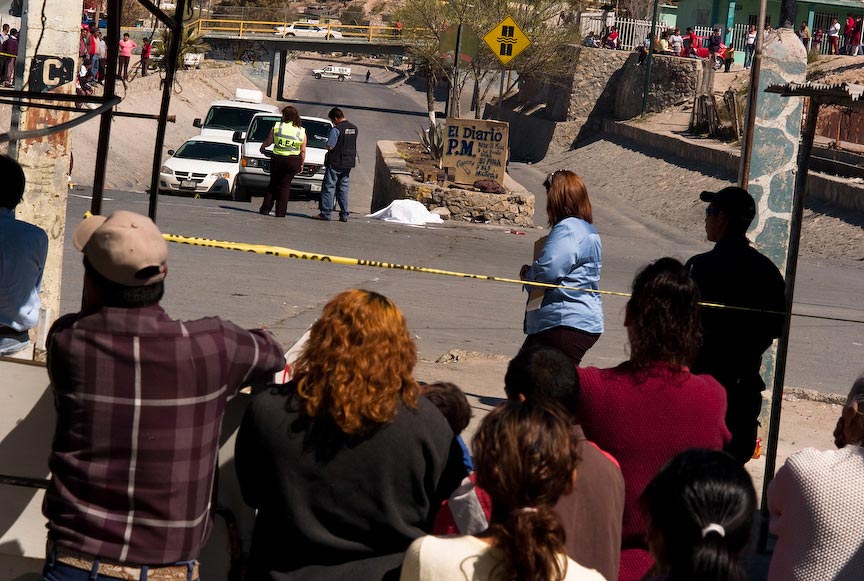
A Scott Carrier essay; photos © 2008 Julián Cardona
I’ve visited Ciudad Juárez for a couple of weeks every year since 2003, usually working with my friend, photojournalist Julian Cardona, on radio stories for “Day to Day” and “Marketplace”. Some of these stories won awards, including a Peabody and a Golden Reel from the National Federation of Community Broadcasters.
In 2003, Juárez was already well known for violence and corruption caused by the drug trade. The homicide rate for the ten-year period ending in 2006 averaged 250-300 a year, roughly equal, per capita, to Detroit or Baltimore. But this year, 2008, the rate of violence has risen by about 500%. Off the charts.
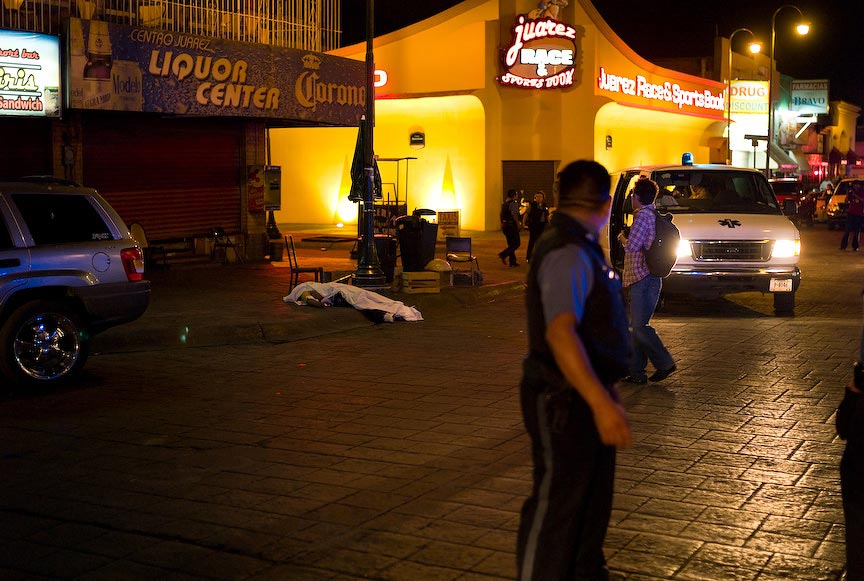
The common explanation for the recent violence in Juárez is that the drug trade has corrupted the police, the courts, the government, and now two rival drug cartels are battling for control of the market — estimated to be about a billion dollars a month of heroin, cocaine, and meth crossing the bridge into the United States. The story is that while these drug cartels do battle, many people get killed. Presumably, eventually one cartel will defeat the other and take total control.
I think this is the story of how it used to be, back in the good old days when the drug lords were actually in control of the police, the courts, and the government, and that now, unfortunately in Juárez there are no police, courts or government to control — they exist, but they do not function. For example, there have been close to 1400 executions so far this year in Juárez, there have been photos of horrible death scenes on the cover of every morning paper, and yet there have been no real investigations of these crimes. So nobody really knows who is doing the killing or why.
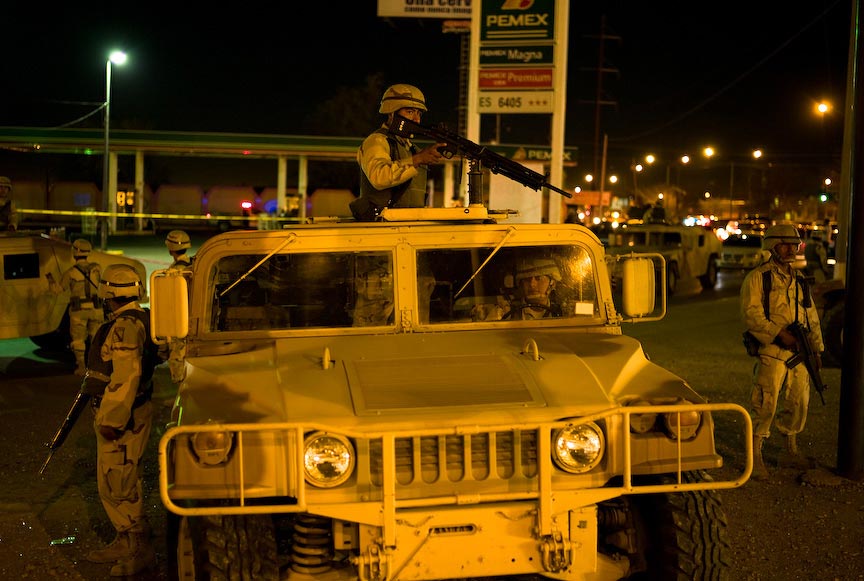
Things started to fall apart in January when President Felipe Calderon sent 3000 Mexican troops to Juárez to fight the war on drugs — a war the U.S. finances to the tune of 400 million a year, small in comparison to the 50 billion we spend on illegal drugs. The troops arrived in January and pretty much every month since then the killings, the kidnappings, the car jackings, armed robberies, extortions, the general sense of chaos has increased to where now Juárez is perhaps the second most violent city in the world next to Baghdad.
The troops patrolled the streets in camouflaged armored vehicles mounted with high caliber machine guns. They could have driven these vehicles to the drug lords’ houses. It’s no secret where they live. But instead they chose to drive pickup trucks and vans to poor neighborhoods and break into people’s homes in the middle of the night, wearing black ski masks, and break things, steal things, beat people up, take men away and torture them.

Last August four men dressed as soldiers walked into a prayer meeting at a drug rehabilitation center in a poor part of the city and killed or wounded fifteen drug addicts and evangelist preachers while military vehicles patrolled the street outside.
I have to wonder who is giving these orders. What drug lord or military officer or police commander orders the killing of clowns juggling at stop lights? Who orders the killing of two disabled parking police — one blind, the other in a wheel chair? What is the purpose of killing a man, hanging his decapitated body from an overpass and leaving the head on the statue of a newsboy in the Journalist’s Park? Why kill a reporter whose only mistake seems to have been to keep count of the number of dead bodies? Who hangs a banner above a grade school threatening to kill the children if the teachers don’t hand over their Christmas bonuses?
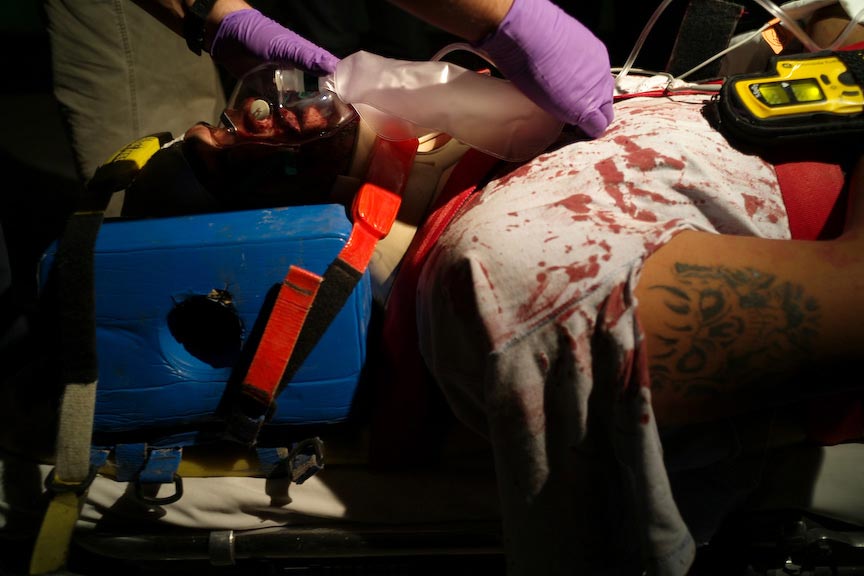
These murders are messages and the message is always the same — no one is charge. There are an estimated 500 street gangs in Juárez, and all of them sell drugs and kill people for initiation and practice. Boys who have grown up alone, their parents working in maquiladoras, get caught up in gangs and learn that drugs and killing are fun. Another estimation is that there are now 20,000 locations on the streets of Juárez where you can buy small packets, a day’s dose, of heroin, cocaine, and methamphetamines for less than five dollars. It used to be that Juárez was like a trampoline for drugs coming into the United States, but now there is a huge internal market for them — not just gang members but middle class people, old people, all kinds of people are now drug addicts in Juárez.
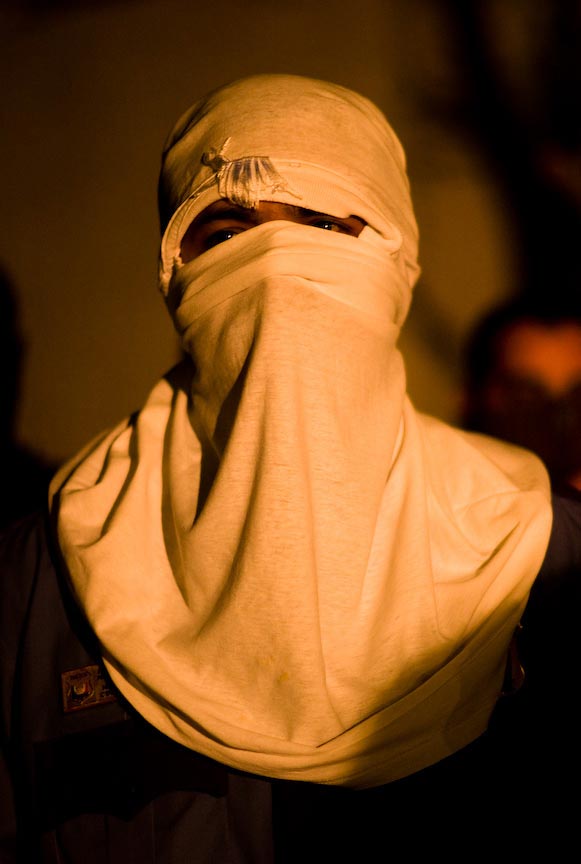
Juárez is a lot like Gotham in the 2008 Batman movie. “The Dark Knight” — a city on the verge of losing its soul. Only Juárez is not a movie, and Batman doesn’t go to Mexico.
My sources for these opinions come from interviewing many people in Juárez, reading the AP stories available on the web through a Google News search, and from what is the definitive text on the subject so far — “Mexico’s Red Days,” by Charles Bowden, published in the August, 2008 edition of GQ Magazine.
